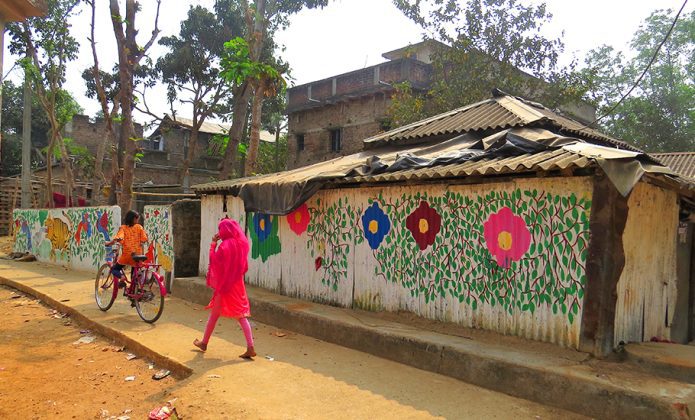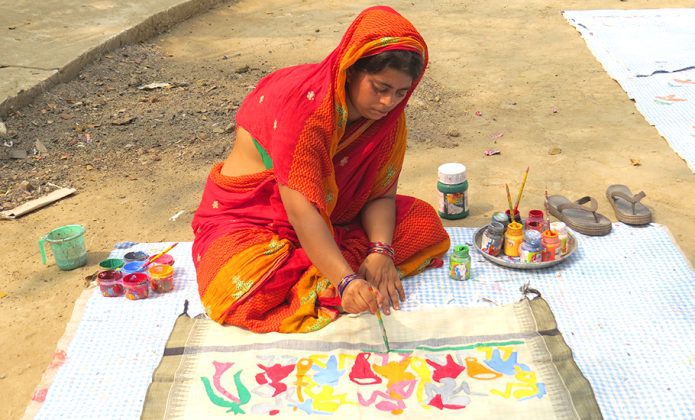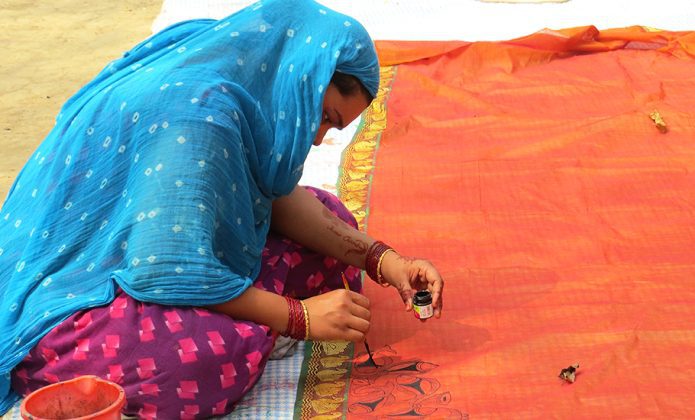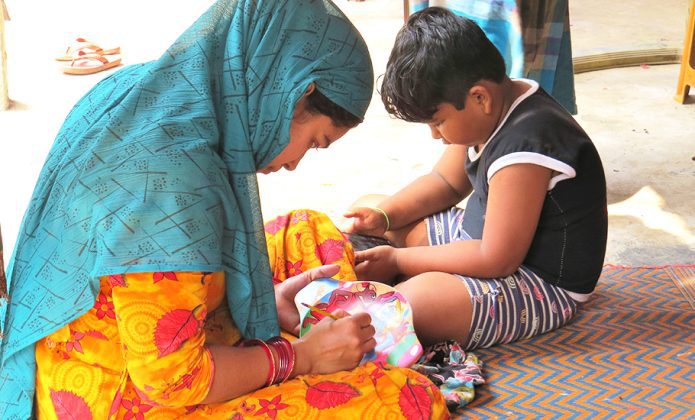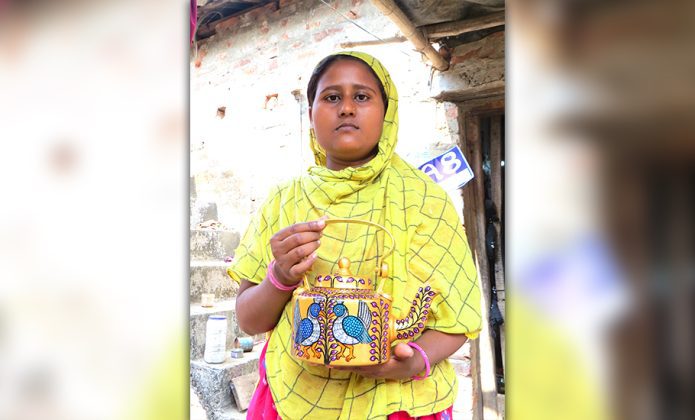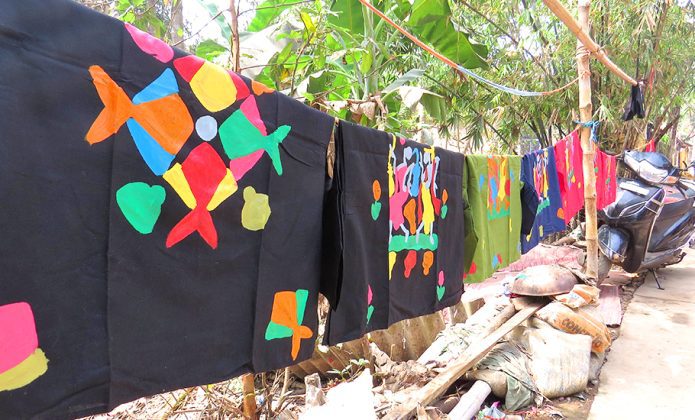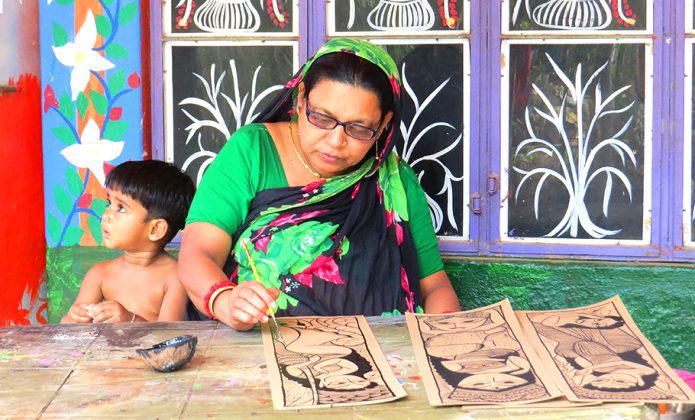
- Home
- News
- Analysis
- States
- Perspective
- Videos
- Education
- Entertainment
- Elections
- World Cup 2023
- Features
- Health
- Business
- Series
- Economy Series
- Earth Day
- Kashmir’s Frozen Turbulence
- India@75
- The legend of Ramjanmabhoomi
- Liberalisation@30
- How to tame a dragon
- Celebrating biodiversity
- Farm Matters
- 50 days of solitude
- Bringing Migrants Home
- Budget 2020
- Jharkhand Votes
- The Federal Investigates
- The Federal Impact
- Vanishing Sand
- Gandhi @ 150
- Andhra Today
- Field report
- Operation Gulmarg
- Pandemic @1 Mn in India
- The Federal Year-End
- The Zero Year
- Premium
- Science
- Brand studio
- Home
- NewsNews
- Analysis
- StatesStates
- PerspectivePerspective
- VideosVideos
- Entertainment
- ElectionsElections
- Sports
- Loading...
Sports - Features
- BusinessBusiness
- Premium
- Loading...
Premium

Patachitra revival: A tale of commercialised art and lost stories

Ajay Chitrakar’s eyes still light up when he speaks about “those days” when they used to go from village to village, showing their art and singing their songs to do a “service to society” — raising awareness or educating the masses. Those were not easy days. Sometimes, they would go around the villages for an entire day and not get even one square meal. “People would look at us...
Ajay Chitrakar’s eyes still light up when he speaks about “those days” when they used to go from village to village, showing their art and singing their songs to do a “service to society” — raising awareness or educating the masses. Those were not easy days. Sometimes, they would go around the villages for an entire day and not get even one square meal.
“People would look at us with suspicion. Some thought we were thieves. So, we would take our identity proof with us,” he chuckles. But Ajay wrote songs on that too, to be sung at another time, at some other show in another part of Bengal.
The septuagenarian is a patachitra artist, or patua, of Naya village in Pingla of West Bengal’s West Midnapore district, some 111 km from Kolkata. Today, hundreds of tourists throng the village every year, especially in the winter months. An annual fair is also held at Naya, which has earned the epithet of “Patachitra gram” (village), and the patuas travel all over India and beyond.

Indeed, the resurrection of patachitra art in Bengal is no less than a wonder, and it happened due to the combined efforts of local and foreign artists, NGOs, and the state government. However, that is only one half of the story.
What is patachitra?
Patachitra, literally translating into ‘cloth-painting’, is one of the oldest and most well-known indigenous art forms of Bengal, dating back to roughly the 12th or 13th centuries.
But the patachitra is much more than art. It is a form of visual storytelling, too, presented by the wandering artist-cum-storyteller patuas through their paintings as well as songs.
The patuas — who have all taken on the surname Chitrakar (artist) — paint a story, scene by scene, on a long strip of cloth and roll it up, only to unfurl it little by little as they sing their self-composed songs to tell the tale. Most of these tales are drawn from Hindu mythology, notably the Ramayan and Mahabharat, but many are based on contemporary topics too. Ajay sings a few lines from a song he wrote many moons ago, in the years following Independence.
“Sukhe din katbe moder, ghuchbe moner betha
Haay re haay swadhinota”
(We thought we would live in happiness; our days of misery would be over. But oh Independence!)
In reality, in the years following Independence, the Bengal patuas went on the verge of extinction. Modernisation, urbanisation, and the advent of radio and television ensured that there were no takers for the ages-old shows of patuas.
The colourless days
“Around 35-40 years ago, the situation was worse than hand-to-mouth,” recalls 50-year-old Manu Chitrakar. At that time, patuas only depended on shows. During Durga Puja or other pujas, they would get calls from big zamindar houses and other rich families and present their patachitra shows. “In exchange, they would get rice and clothes. With the worsening financial situation, the desperate patuas started going to the villages uninvited, and even begged. With that, they lost all respect and demand,” narrates Manu.
Incidentally, Naya village was not originally inhabited by the patuas. The wandering artists had their homes in East Midnapore’s Thekuachak and Chandipur villages and South 24-Parganas’ Diamond Harbour and Sarisha areas. Pingla is in a paddy-growing zone, and the patuas would go there with their shows during the winter harvest month of Poush (December-January). It was a good time to earn some rice in exchange for their patachitra shows. Over the years, in ones and twos, many patua families shifted to Naya permanently.
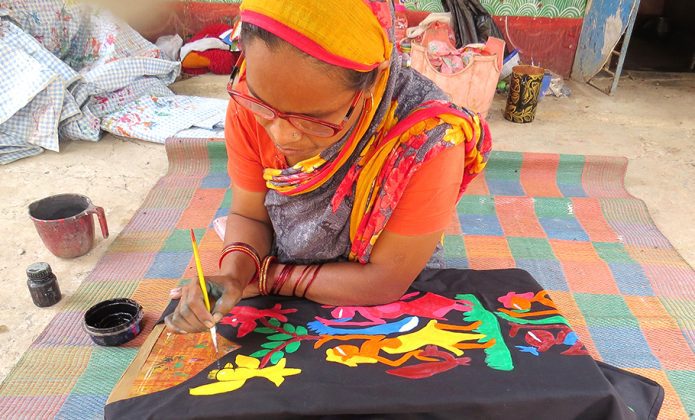

As patachitra shows lost their charm, the patuas shifted to professions like farming, van-rickshaw driving, or tailoring. Many, like Manu himself, shifted solely to idol-making — another traditional occupation of the patuas. Only a few old people, like Ajay, held on to it because, as Manu puts it, “They could do nothing else.” And it was they who saved Bengal’s patachitra art from vanishing forever.
The resurrection
Manu’s elder sister Swarna Chitrakar, 53, who is one of the most famous patuas, says while television and radio robbed the artists of their charm, these also ensured that they never went invisible. Some of the patuas got the opportunity to sing in television and radio programmes. But only a few pursued the art at the time.
Gradually, people from Kolkata started going to Pingla to make documentary films, says Manu. Some Kolkata-based artists would buy a few patachitras and take the artists to fairs. “In the mid-1980s, Alliance Francois commissioned a work on the French Revolution by the patuas. My father and some others did that work. That is when patachitras started selling,” says Manu. Before that, patuas had no concept of selling their art. It was all about the shows.
“German scholar Thomas Kaiser came to our village around 1994-95. He did a lot of work with us and bought patachitras worth Rs 10 lakh for a museum. Nobody could even imagine that kind of money. In fact, we did not even know how much to ask for. He decided the price. It was then that many who had given up started taking up the art again, realising there was money to be made,” narrates Manu.
An all-round push
But the final and major push came from BanglanatakDotCom, a social enterprise working with indigenous communities, among others. They taught the patuas to take their craft beyond the traditional scrolls and replicate their art on items of modern interest, such as T-shirts, kurtis, saris, wooden trays, steel glasses, mugs, kettles, and other items. They built a research centre and a community hall in the village and now there is a tourist accommodation there as well.
Ajay’s son-in-law Chandan Chitrakar, 42, says Banglanatak trained them in how to design the products, pack them, and also started the annual fair. “We did not know what Khadi was. They got us acquainted with Khadi. Banglanatak even taught us a little English. At least we can now thank foreigners, invite them to our house, tell them about our work, talk about our dyes,” says Swarna.
Once the patuas got the much-needed visibility through Banglanatak, the state government chipped in with further help. The Department of Information and Cultural Affairs started giving them opportunities, such as exposure through fairs and workshops. Help came from NABARD as well.
One of the major platforms is the annual Handicraft Fair in Kolkata, says Swarna. Apart from that, the patuas go to handicraft fairs across Bengal, to Delhi, Bhopal, Mumbai, Bangalore, Mysore, Hyderabad, Chennai, and many other cities, both with government and private help.
As many as 60 families now practise patachitra art full time in Naya, each family earning at least Rs 2.5 lakh per year. But sadly, the art is now largely product-centric and not the visual storytelling it was originally about.
Peculiarities of patachitra
There are many interesting facets of Bengal’s patachitra art. For one thing, it is a key example of Bengal’s syncretic culture. Almost all the patuas are practising Muslims, even though most have Hindu-sounding names. And yet, their art tells stories from Hindu mythology.
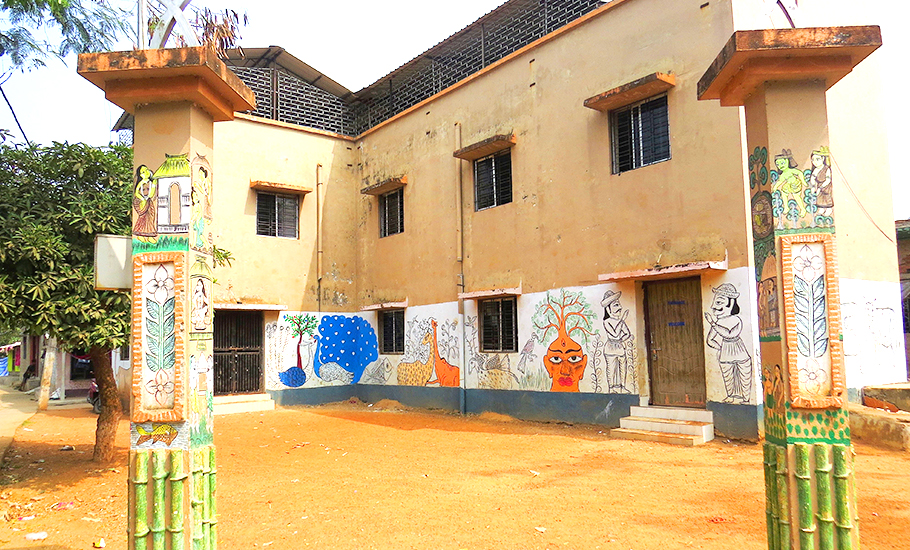
It wasn’t easy, says Manu, as they would face hostilities from both Hindus and Muslims, because Islam prohibits painting human figures. “Before the 1970s, patuas would use two names — one Hindu and one Muslim. While making Durga idols or holding shows in Hindu houses, they would use the Hindu name. But when they would go to Muslim areas with Satya Pir-er gaan (Satya Pir songs) and the like, they would use the Muslim name,” he shares.
Many patuas even converted to Hinduism. But now, those days are over, Manu says. “Now, we get both Hindu and Muslim students, who stay with us without any issues. There are intermarriages too,” he adds.
Another interesting thing is that the patuas still largely use natural dyes in their patachitra, which are now made on paper instead of cloth. The dyes come from different leaves, fruits, flowers, and vegetables. For instance, green comes from flat bean leaves, blue from the aparajita (Asian pigeonwing) flower, white from ground rice, red from a local fruit, pink from beet and Malabar spinach fruits, orange from marigold, yellow from raw turmeric, and black from burnt rice. The dyes are mixed with the resin of the bael (wood apple) fruit to make them more lasting.
“However, it’s a long and complex process and the cost of the work goes up as well,” says Ajay’s daughter and Chandan’s wife Putul Chitrakar. So, why do they still do it instead of using synthetic colours? “It’s our tradition, our pride,” she smiles. “I don’t feel as good working with synthetic colours though sometimes we have to do it if there is a big job,” she adds.
A materialistic shift
Just as particular about following traditions is Swarna. The famed patua, who has been to the UK, France, Sweden, Italy, Germany, Japan, and the US, and even delivered lectures about her art at Brown University, does not paint anything but patachitra even now. “I don’t paint on sarees or other products. They look nice; they sell too. But I don’t feel like working on them,” she smiles.
But the truth is that there is greater demand for products such as trays, kettles, and glasses instead of the patachitras, the patuas admit. As it is, the patuas have had to “fragment” their art. “Earlier, the entire patachitra scrolls would be 12 to 15 feet in length. Who would buy them? Ramayan was a 15-ft painting. Now we make small single patachitras so that people buy them,” says Chandan.
The lost stories
Also, most of the young patuas do not know the songs, which are an integral part of patachitra art form. Youngsters like Rehana Chitrokor, 20, and Sushobhan Chitrokor, 26, admit that they do not know any pater gaan (patachitra songs). Sushobhan, who proudly says that he also paints Kalighat patachitra — a different style that evolved in Kolkata — too admits that he should know the songs because that is what made them unique.
Rehana’s grandfather knew a lot of songs but he passed away last year and all his songs went with him. She says she never tried to learn those. Also, the patuas have the tradition of passing on the songs orally from generation to generation and nothing was written down because most of them were illiterate.
Even Putul admits that she is yet to learn the art of song composition from her father Ajay, whom they still rely on for writing their songs. They still need the songs when, for instance, government orders come for raising awareness on pulse polio, malaria, HIV, etc.
“I have taught my daughters the songs I know, but most others are not into the stories. They are happy painting Santhal figures, fish, and birds on kurtis and kettles. Whatever sells,” rues Swarna. “I don’t blame them. Earlier, we did not even have enough to eat. Now, not only do we have enough food and clothes, but also comfort. We have good roads, streetlights,” she is quick to add.
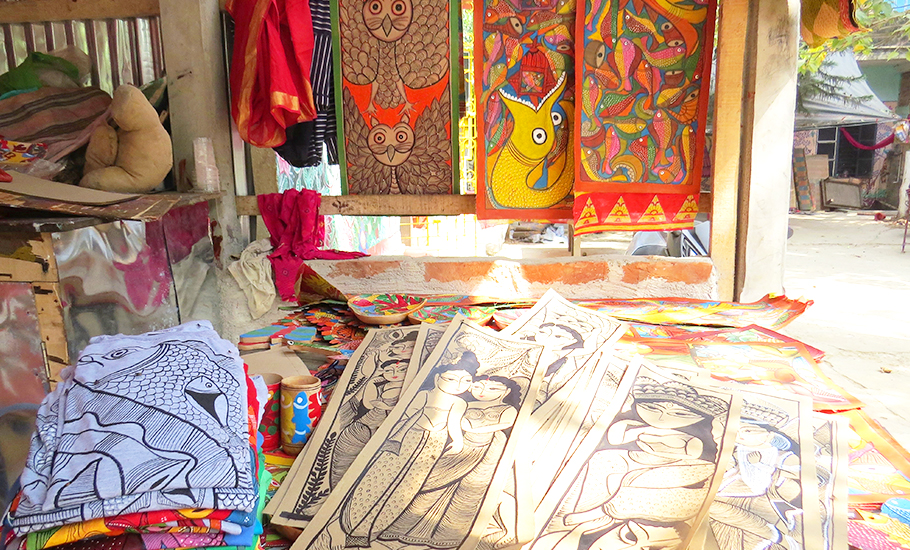
“However, the result is that we have lost many songs forever. We tried to learn the big songs like Raja Hairshchandra and Daata Karna, but failed. Even what we still have may be lost forever if the younger generation does not pick those up. And I don’t see them doing so,” Swarna signs off.

